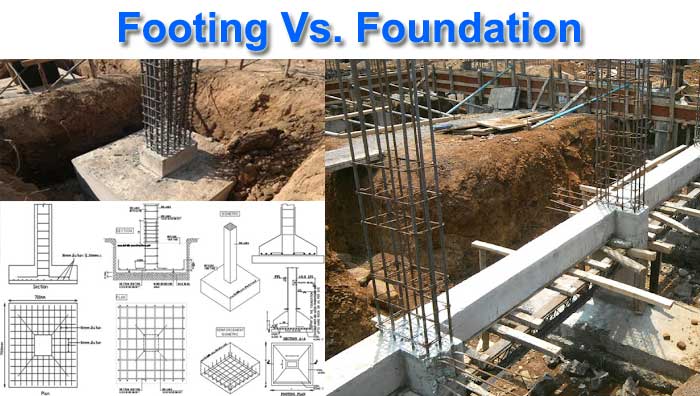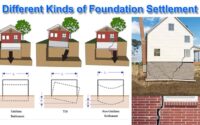What is Footing? | What is Foundation? | Footing Vs. Foundation
This article will guide you through the differences between the footing and foundation of building construction. At the bottom check Footing vs. Foundation.
What is Footing?
The footing is the component of the foundation that supports and distributes the load over a wider area of the soil, ensuring a stable basis for settlement.
Footings are typically utilized in conjunction with shallow foundations and are typically cast with reinforcement and concrete.
The width and depth of footings are primarily determined by the foundation’s size, type, and soil.
What is Foundation?
The foundation is the lowest portion of a building construction structure, and its major duty is to securely transfer the load from the upper components to the below soil.
In general, there are two types of foundations: shallow foundations and deep foundations.
The weight is transferred to the shallow depth of up to 1.5m with a shallow foundation. The load is transferred further into hard strata below the ground surface, with a depth of more than 1.5m, via the deep foundation.
For low-rise structures with a horizontal spread greater than vertical height, a shallow foundation is employed.
A deep foundation is required for high-rise construction, such as a skyscraper, or a building constructed on particularly weak soil. If the structure is expected to grow vertically in the future, a deep foundation should be considered.

There are many Differences between Foundation and Footing:
| FOUNDATION | FOOTING |
| The component of a building that distributes structural loads from the superstructure to the earth. | A portion of the foundation that is in direct contact with the earth. |
| The part of the foundation that is in contact with the ground. | A load-transfer structure from the superstructure to the earth. |
| Individual columns are supported as a result of this. | This helps to support the entire structure. |
| It can be compared to the feet of a leg. | It was likened to a pair of leg feet. |
| Piles, caissons, footings, piers, lateral supports, and anchors are examples of foundation types. | This footing consists of a slab and rebar made of brickwork, masonry, or concrete. |
| This foundation provides comprehensive support since it supports a group of footings as a whole structure. | A column’s footing provides additional support. |
| This Foundation is the structural support that can withstand a wide range of loads. | The foundation determines the number of footings. |
| The foundation is in direct touch with the earth and transmits the vibrations to the ground. | This type of footing sends loads to the earth immediately. |




